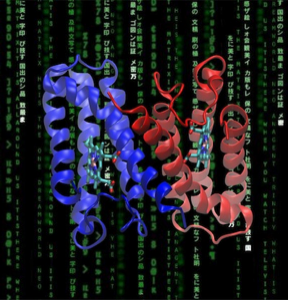Drug targets identified using genomics analysis or genetic knockout approaches may not be biochemically characterized and their sequences may be sufficiently divergent from proteins with known biochemical function to preclude functional identification using straightforward BLAST sequence comparisons.
Targets that are enzymes often utilize cofactors that confer structural changes on the protein-cofactor complex that are important for inhibitor binding.
For this reason, it has proved useful to initiate thermofluor HTS campaigns by screening a library of known cofactors and substrates to determine if any bind to the target protein, and should consequently be included as an assay component.
As a simple extension, knowledge that a protein binds a specific cofactor and or substrate can define more focused sequence comparison approaches or biochemical experiments that that determine a protein's actual biochemical function.
<div id="myExtraContent1"> </div>
<div id="myExtraContent2"> </div>
Beta-Sheet.org
Ray Salemme's Website
<div id="myExtraContent3"> </div>
<div id="myExtraContent4"> </div>
Page last updated: 1/4/19
<div id="myExtraContent5"> </div>
Decrypting Protein Function
Decrypting the biochemical function of an essential gene from Streptococcus pneumoniae using ThermoFluor technology. Carver TE, et.al. J Biol Chem. 2005 Mar 25;280(12):11704-12. [Functional characterization using thermofluor] PMID: 15634672
Functional assignment of solute-binding proteins of ABC transporters using a fluorescence-based thermal shift assay.Giuliani SE, Frank AM, Collart FR, Biochemistry (2008) 47:13974-13984 [Fluorescence thermal shift (FTS) analysis of amino acid ligand binding to bacterial ABC transporters.] PMID: 19063603
Characterization of a CorA Mg2+ transport channel from Methanococcus jannaschii using a Thermofluor-based stability assay. Kean J, et.al. Mol Membr Biol. 2008 Dec;25(8):653-63. [Functional characterization using thermofluor] PMID: 19039701
<div id="myExtraContent7"> </div>
<div id="myExtraContent8"> </div>
